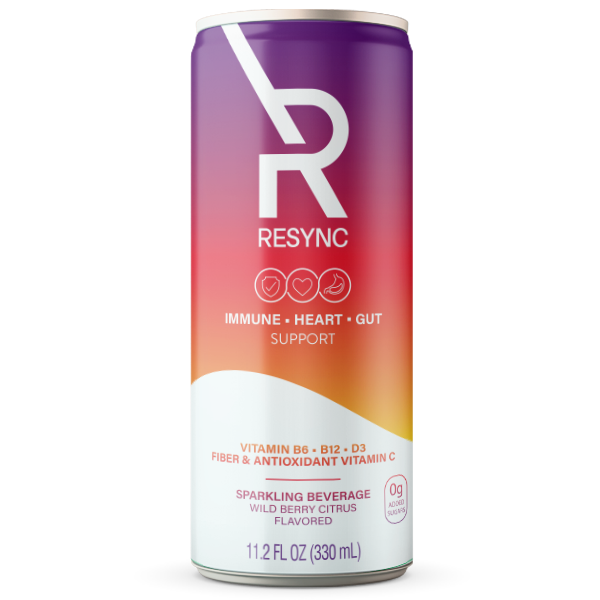
What To Eat To Prevent
Connective Tissue Injuries:
Athletes and Connective Tissue Issues
In this article:
The way most people think about preventing injury is backward. It’s so much more than warming up properly or training for mobility and strength.
As a company that focuses on recovery, from daily stress to travel to athletic recovery, we see the consequences of this misconception firsthand. Not paying attention to what happens after the workout puts athletes and any person at a disadvantage. We’re talking about more than just muscle soreness here. Think of all your connective tissues, like your blood, tendons, ligaments, and fascia—there are layers to pay attention to!
It’s straightforward: If any of your connective tissues are not fully recovered, you are more predisposed to injury. So, if an under-recovered body becomes an injured body, then focusing on effective recovery is focusing on prevention.
Let’s explore this more below.
- Using Recovery for Injury Prevention: Beyond Muscle Recovery and Repair
- What Leads To Damaged Soft Tissues?
- Blood Flow, Nitric Oxide, and Injury Prevention
- Best Diet to Prevent Connective Tissue Injuries: What Not To Eat & What To Eat
- Best Foods for Injury Prevention
Using Recovery for Injury Prevention: Beyond Muscle Recovery and Repair
The words “injury prevention” evoke thoughts of consistent self-care. Dynamic warm-ups, myofascial release therapies, and consistent strength training with different loading patterns are just a few modalities that probably come to mind for you.
But preventing injury is more than just oxygenating your tissues before a workout and crafting a targeted training plan.
You can’t forget that you don’t get stronger during exercise. You get stronger after recovering from exercise.
Take muscle inflammation and recovery, for example. To build injury-resistant muscles, they have to get stronger, so you train them. The natural course of strength exercises starts with an inflammatory response, leads to an anti-inflammatory resolution, and finalizes with the remodeling — and strengthening — of the affected tissues.
Similarly, with your other musculoskeletal connective tissues, your tendons remodel thicker after being loaded with heavy weights, your cartilage grows smoother when the right forces are applied through the range of motion, etc.
Your tissues don’t get stronger during exercise; your gains are only realized after recovering from the exercise stimulus.
Your ability to build strong tissues depends on the nutrients you eat. Although there’s no natural inflammation “cure,” certain foods and nutrients can play a role in supporting the natural inflammatory process from exercise. You can use these nutrients to help you recover faster, build back stronger, and prevent injuries. So, nourishing your recovery is essential for building stronger connective tissues that are resilient to injuries.
It’s easy to overlook recovery nutrition, but making the most of your athletic recovery is just as important as making the most of your athletic training!
First, a point of clarification: What’s the difference between “soft tissues” and “connective tissues”? These two terms are often used interchangeably, but they are best understood as distinct, with some overlap.
“Soft tissues” refers to the whole collection of pliable tissues that make up your body, including skin, body fat, nerves, and the “soft skeleton” comprised of muscles, tendons, ligaments, cartilage, and fascia.
“Connective tissues” refers to the soft skeleton but also includes bones, body fat, and blood. Fascia is an interesting tissue, as there are scientists who want to categorize it as a connective tissue since it connects the entire body underneath the skin and shapes and holds our bodies together.
This article focuses on the tissues of the soft skeleton since these are the tissues that play the biggest role in common injuries. Keep that in mind when we say “soft connective tissues.”

RESYNC COLLAGEN PEPTIDES
Collagen Types I & III With Nitric Oxide Reds
- Taken by elete athletes and MLB, NBA, NFL, NHL, US Soccer & NCAA Teams
- Clinically tested, researched & 3rd party tested (NSF Sport Certified)
- Supports circulation & nutrient delivery to every layer of the body*
- Lubricates skin, joints, and other connective tissues*
- Addresses muscle soreness post physical activity*
- Enhances joint comfort & mobility support
Save 20% Off All Resync Products
Use Code: BLOG2021
Shop NowWhat Leads To Damaged Soft Tissues?
Soft connective tissues are most frequently injured from chronic use and misuse. Acute traumatic injury (aka soft tissue contusion) happens regularly as well.
But what makes a soft connective tissue more prone to injury?
If tissues are exposed to chronic inflammation or certain disruptive chemicals, they will be brittle and injury-prone. Tissues that develop or remodel without the right nutrients (like oxygen or collagen-specific amino acids) will also lack resilience.
The good news is that your nutrition choices have a big impact on your inflammatory state and nutrient availability. What you eat (and what you don’t!) directly affects the properties of your soft connective tissues.
It goes to show that, with the right nutrition, you can do so much for your body’s resilience!
Blood Flow, Nitric Oxide, and Injury Prevention
Aside from misuse or trauma, acute connective tissue injuries can also result from poor oxygenation. This is why tendons tend to injure where they are thickest; it’s where the tissue has the least access to oxygen and nutrients from nearby blood vessels.
Queue Nitric Oxide, the blood flow molecule.
Nitric oxide signals your blood vessels to open up, allowing oxygen and nutrients to flow into tissues. You can make some nitric oxide from arginine and citrulline, but your body can produce huge amounts of nitric oxide from natural plant-based nitrates.
Let’s take a look at the benefits of nitric oxide for connective tissue resilience both before and after exercise.
Dynamically warming up before exercise eases you into trying hard, but what goes on at the microscopic level? Movement activates your joints and tissues, increasing blood flow and oxygenation. That’s one major component of “warming up” before exercise.
Pairing your pre-workout routine with blood flow-boosting nitric oxide supplement makes sense, as this will support circulation and oxygenation physically and nutritionally.
The role of nitric oxide shines in the post-exercise recovery period, too. Increased blood flow helps remove inflammatory molecules and waste products and delivers the oxygen and nutrients your body needs to build back stronger soft and connective tissues.
The Multi-Faceted Role of Microcirculation in Connective Tissue Injuries
The role of blood flow is important, but macro-level blood flow has to be understood in conjunction with circulation at the micro level. Microcirculation is the flow of blood cells in the smallest of blood veins, your capillaries; this is the site where nutrients and waste products are exchanged between tissues and blood.
The nuanced point to make here is that you don’t want to just focus on more microcirculation. You want to ensure you’re going after better microcirculation. Excessive microcirculation within the tissue is a feature of damaged tendon tissues, yet promoting oxygenation is a way to enhance tendon resilience and strength.
The key to understanding this paradox is the type of exercise. Eccentric exercises are used to recuperate tendinopathies because they reduce abnormal capillary blood flow to tendons without compromising local tendon oxygenation and healthy microcirculation.
All that said, poor microcirculation is directly linked to the risk of injury and increasing microcirculation is an essential part of the positive adaptation process, so you definitely need it for recovery. When used in conjunction with the right exercises, foods that enhance microcirculation help you make the most of your exercise and recovery.
As important as oxygenation is in all forms of injury prevention, you can’t let hydration fall by the wayside.
All of your soft connective tissues are more water than tissue, so make sure your water is working for you.
Learn more, including a free PDF that gives the key steps athletes take to ensure their body is hydrated, in our recent article: Why Electrolytes Are Not Good Enough For Effective Hydration.
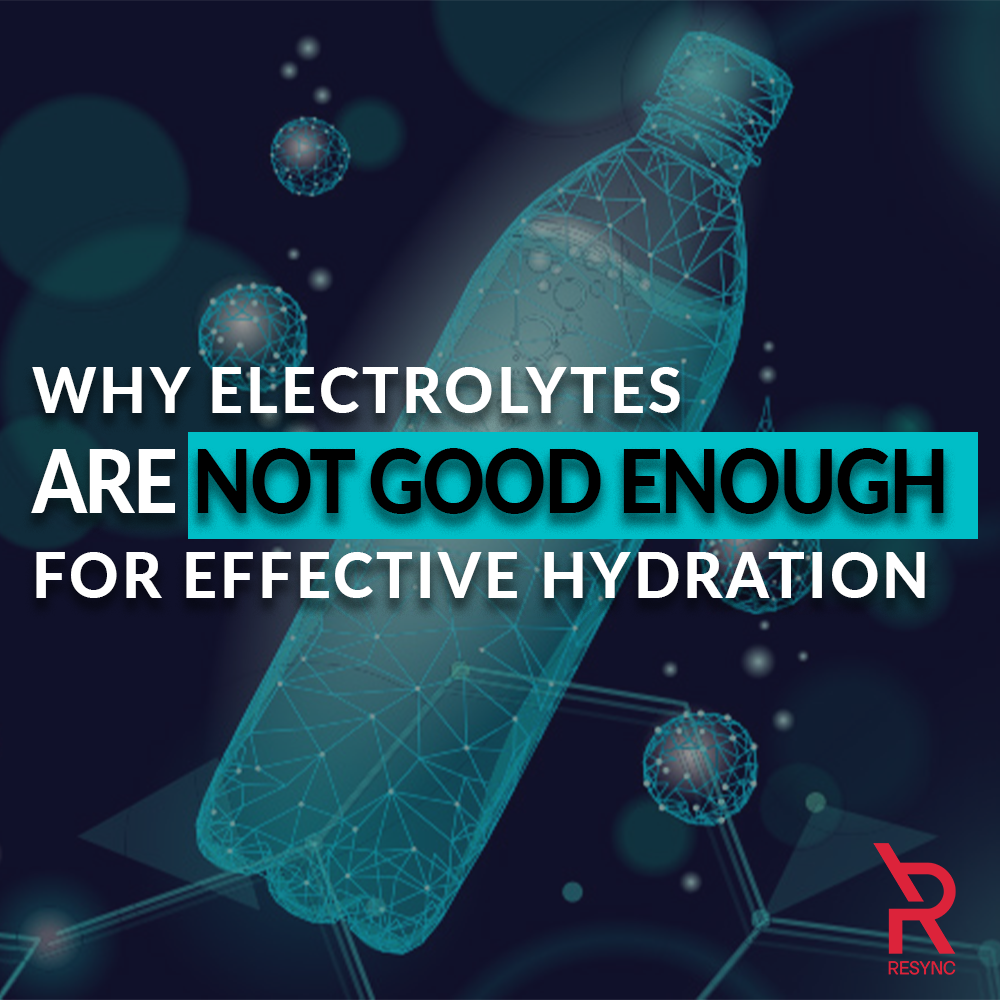

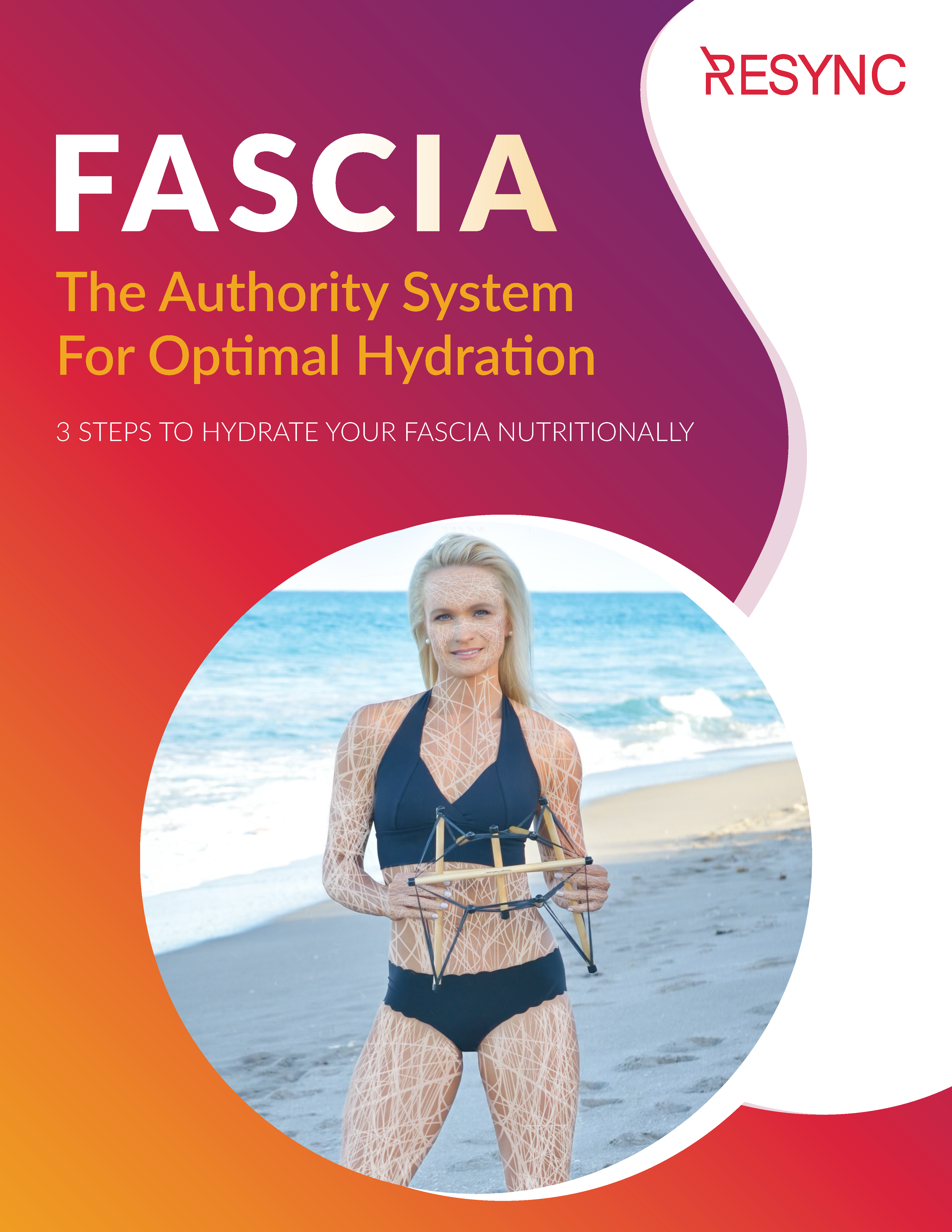
GET YOUR FREE PDF DOWNLOAD
3 Science-based & esential steps to hydrate your fascial system
- Drinking water & taking electrolytes is not enough to hydrate your body.
- Say goodbye to joint stiffness & soft tissue injuries.
- Embrace the same steps the top 1% of pro athletes apply to rehydrate every cell in the body.
Save 20% Off All Resync Products
Use Code: BLOG2021
Shop NowBest Diet to Prevent Connective Tissue Injuries: What Not To Eat
Your overall nutrition will have a huge impact on how well you are able to prevent injuries. An anti-inflammatory diet full of colorful fruits and veggies and balanced with healthy proteins and fats goes a long way in setting your body up for success.
What you don’t eat is important, too, as certain foods create chaos in your connective tissues.
Eating fried and charred foods, and eating empty white carbs like refined grains and sugar cause connective tissues to become weak and brittle. Eating more refined carbohydrates than your body can handle leads to high blood glucose.
In turn, at the molecular level, the excess glucose irreversibly binds to collagen proteins in your tendons, cartilage, blood vessels, and other tissues — a process called “glycation”. When your connective tissues are glycated, they lose their properties of glide, stretch, and tension, leaving you with a body that can’t perform the way it used to.
You can learn more about how advanced glycation endproducts are a lurking contributor to connective tissue damage in this blog:
Joint Pain And Sweet Tooth: What Can You Do About The Undeniable Link?

Another factor where what you eat directly impacts your connective tissue resilience is the amount of inflammation you are exposed to through your diet. Our bodies are naturally exposed to inflammation every day. Although some inflammation, like the natural response to exercise, is healthy, much of the inflammation we are exposed to has negative effects.
Your body protects itself from inflammation with antioxidants like vitamin C, vitamin E, glutathione, and others.
Not eating enough antioxidant vitamins and minerals or anti-inflammatory polyphenol antioxidants can lead to damaging chronic inflammation that accelerates aging and destroys your health. Not enough antioxidants will prevent you from recovering stronger from exercise’s inflammatory stimulus.
To see what a nutritious diet applies to the specific case of Achilles tendon issues, look at our last blog:
What To Eat To Avoid Achilles Tendon Stiffness & Injury.
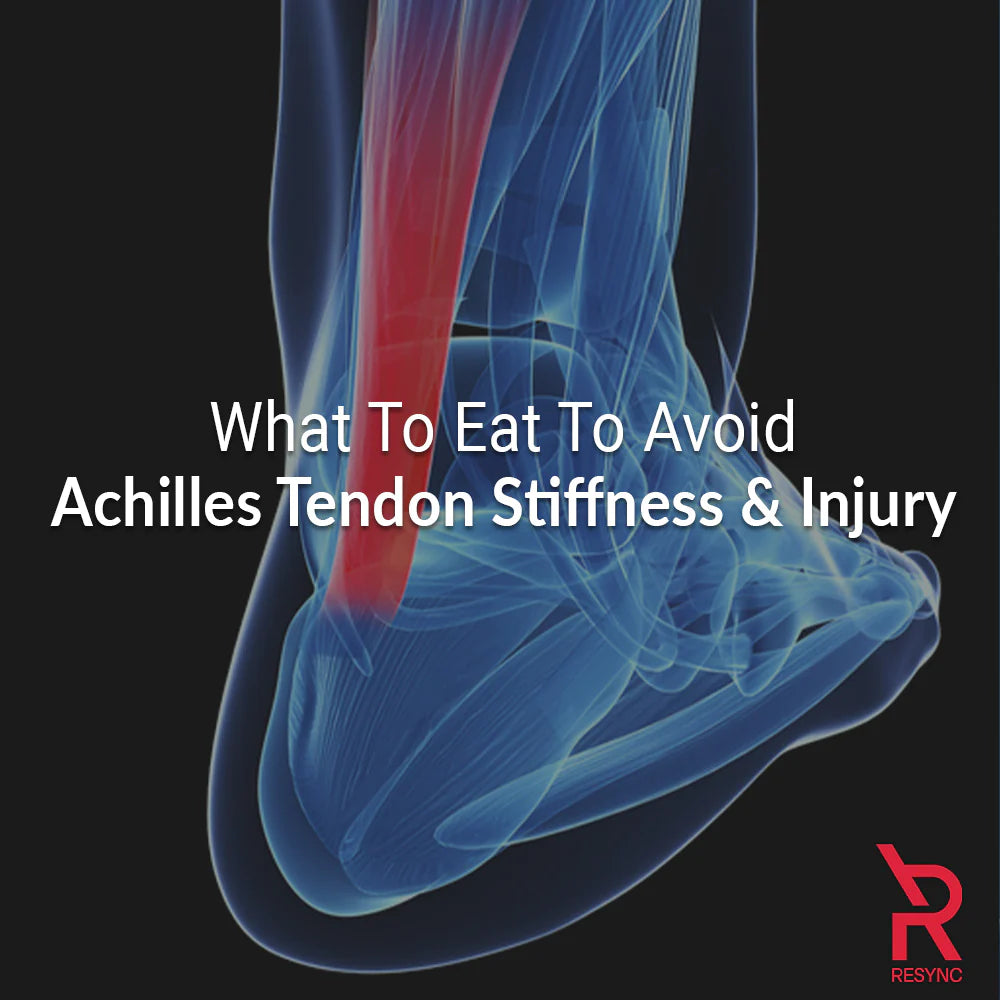
Best Foods for Connective Tissue Injury Prevention
The list is long when it comes to specific foods that can support your recovery and prevent injuries. Here, we want to highlight some of the most powerful and important foods for recovery and injury prevention, but you’ll find other foods to consider in the blog: What To Eat To Avoid Achilles Tendon Stiffness & Injury.
Think of these foods as the cherry on top of an already solid nutrition strategy. First, ensure you get enough of your essential nutrients from what you eat. Then fill in any gaps in your diet with supplements for anti-inflammatory, recovery-enhancing support.
Pro tip: What you drink is as important as what you eat!
Read this blog to learn how to make the most of your water: Why Electrolytes Are Not Good Enough For Effective Hydration.
Let’s look at some of the most impactful and often overlooked foods and nutraceuticals for preventing injuries.
Collagen Protein - the protein your connective tissues are made of
Topping the list of important nutrients for recovery and injury prevention, collagen protein is backed by numerous scientific studies and thousands of happy customers. Study after study shows that every layer of your body, from your bones to your skin and every connective tissue in-between, builds resilience with a regular collagen supplement.
However, it’s not enough to simply take collagen; you have to ensure your body has the supportive nutrients needed to use that collagen to make stronger tissues. Vitamin C, glucosamine, and Boswellia serrata contribute to collagen-building. They are included in the Resync Collagen Blend so that you can get the most from your collagen supplement.
Dive in here: Collagen - Everything You Want And Need To Know About Collagen Protein.
And if you’re ready to shop for the perfect product, take a look at the buying guide here: Which Collagen is Best?
However, it’s not enough to simply take collagen; you have to ensure your body has the supportive nutrients needed to use that collagen to make stronger tissues.
Vitamin C, glucosamine, and Boswellia serrata contribute to collagen-building.
They are included in the Resync Collagen Blend so that you can get the most from your collagen supplement.
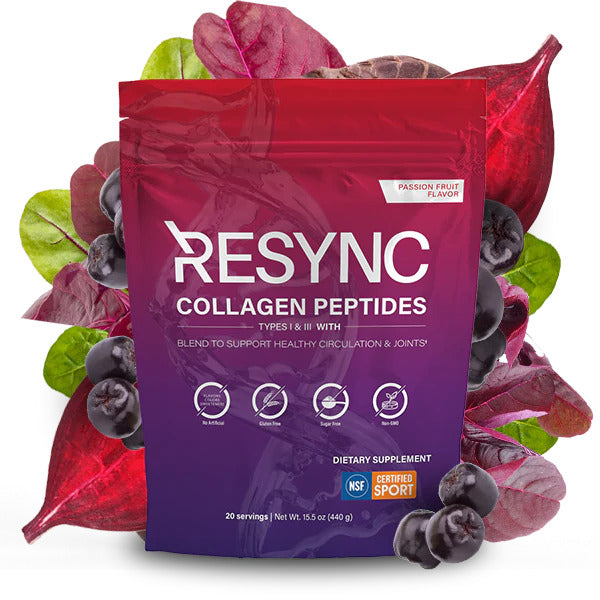
Dive in here: Collagen - Everything You Want And Need To Know About Collagen Protein.
And if you’re ready to shop for the perfect product, take a look at the buying guide here: Which Collagen is Best?
Reds For Oxygenation & Nitric Oxide Support
Red Spinach
Red spinach (amaranth) is the single most concentrated source of natural plant-based nitrates, approximately 5x more than beets.
Nitrates are the base material your body uses to make nitric oxide, AKA the blood flow nutrient. As one of the cornerstone ingredients in the Recovery Red Blend in Resync products, by supplying a concentrated source of this vital nutrient, Resync hopes to help you recover faster, energize your body with oxygen, and live a healthier life.
More on Recovery Reds: Why Red Spinach, Aronia Berry, And Red Beets Are Your Best Bet For Daily Nitric Oxide Support.

Aronia Berry
Commonly known as “Black chokeberry,” Aronia is making waves as one of the most concentrated sources of antioxidant polyphenols. One study, described in this blog, shows its antioxidant capacity blows elderberry, acai, and goji berries out of the water.
Aronia also delivers natural nitrates that you might not expect in a fruit, more even than beets!
Even if it is less known than other superfood berries, don’t pass up on the potent polyphenol punch this fruit packs! Links

Beetroot
Beets have long been known for boosting nitric oxide and endurance performance, but did you know the red root is not actually very high in nitrates?
In fact, more than a dozen other foods have higher nitrate levels than beets. Even so, unique antioxidants called betalains may positively affect heart health and exercise recovery, even beyond the supportive role of nitrates. Combined with the other Resync Reds, beetroot earns its place as a restorative and recovery enhancer.

Superfood Sources of Antioxidant Polyphenols
Turmeric
The golden spice has potent effects on the natural inflammation caused by exercise; supplementation can reduce soreness and pain caused by exercise. The issue with most turmeric is that it passes right through you with, but a fraction of it is absorbed by your body.
This is why any effective supplement has to be formulated specifically for absorption. Curcumin extract from the turmeric root is an effective way to make sure these anti-inflammatory properties get to where you need them most.

Ginger
Ginger has stood the test of time as a top-tier medicinal in traditional and modern therapeutics. Its versatility as a superfood is hardly matched anywhere else.
It functions as an anti-fatigue anti-inflammatory agent, but also has effects on pain perception and helps alleviate post-workout swelling and soreness.
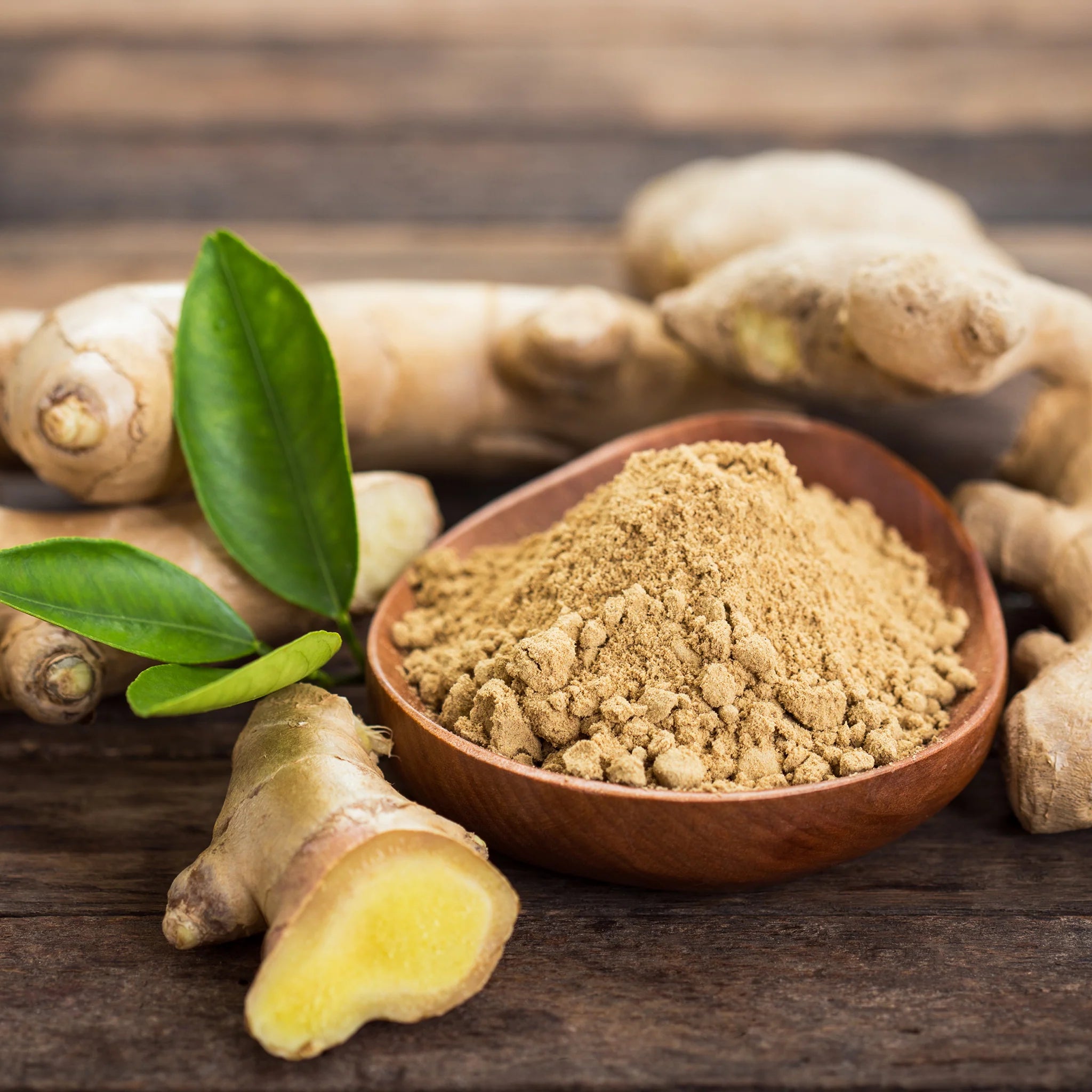
Mango
Mango improves microcirculation, which helps your lung and heart to do their job of delivering nutrients and removing waste products at the microscopic capillary level. Capillaries are the tiniest of blood vessels and the stage for nutrient exchange at the cellular level. You’ll remember that microcirculation is crucially important for connective tissue recovery, and higher microcirculation is associated with better injury prevention. Nitric oxide may play a role in microcirculation, but getting mango in your diet, either as a whole food or from a quality-certified extract, perfectly complements the macro-level heart health and circulation benefits of blood flow-enhancing nitrates.
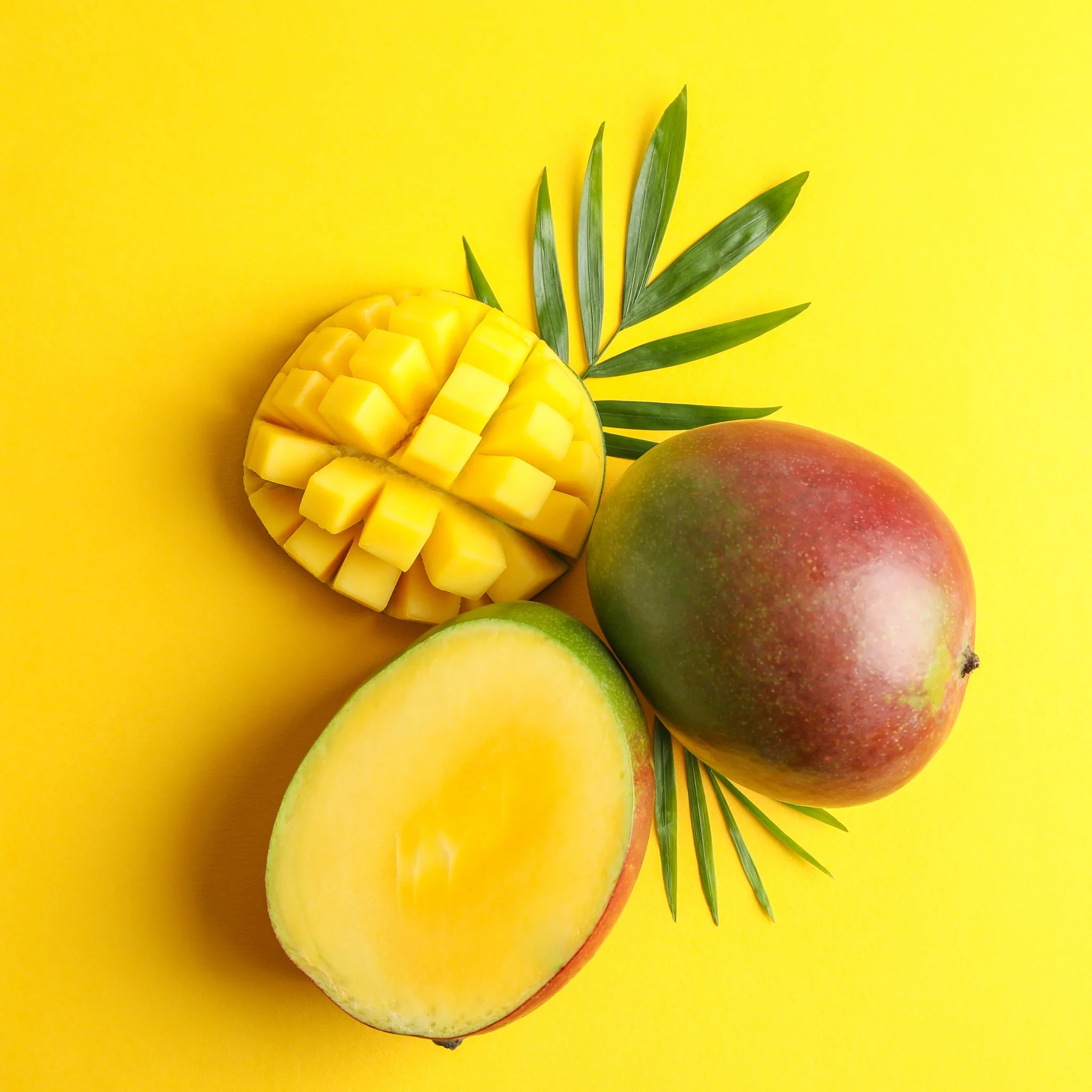
EXPAND YOUR KNOWLEDGE
WITH RESYNC Nutrition & Connective Tissue Courses
The Resync team has curated a 6-part course that dives deep into every layer of the body.
These courses provide evidence-based nutrition recommendations to optimize performance, accelerate recovery, promote healing from an injury, and manage symptoms of connective tissue conditions that are responsive to nutrition.
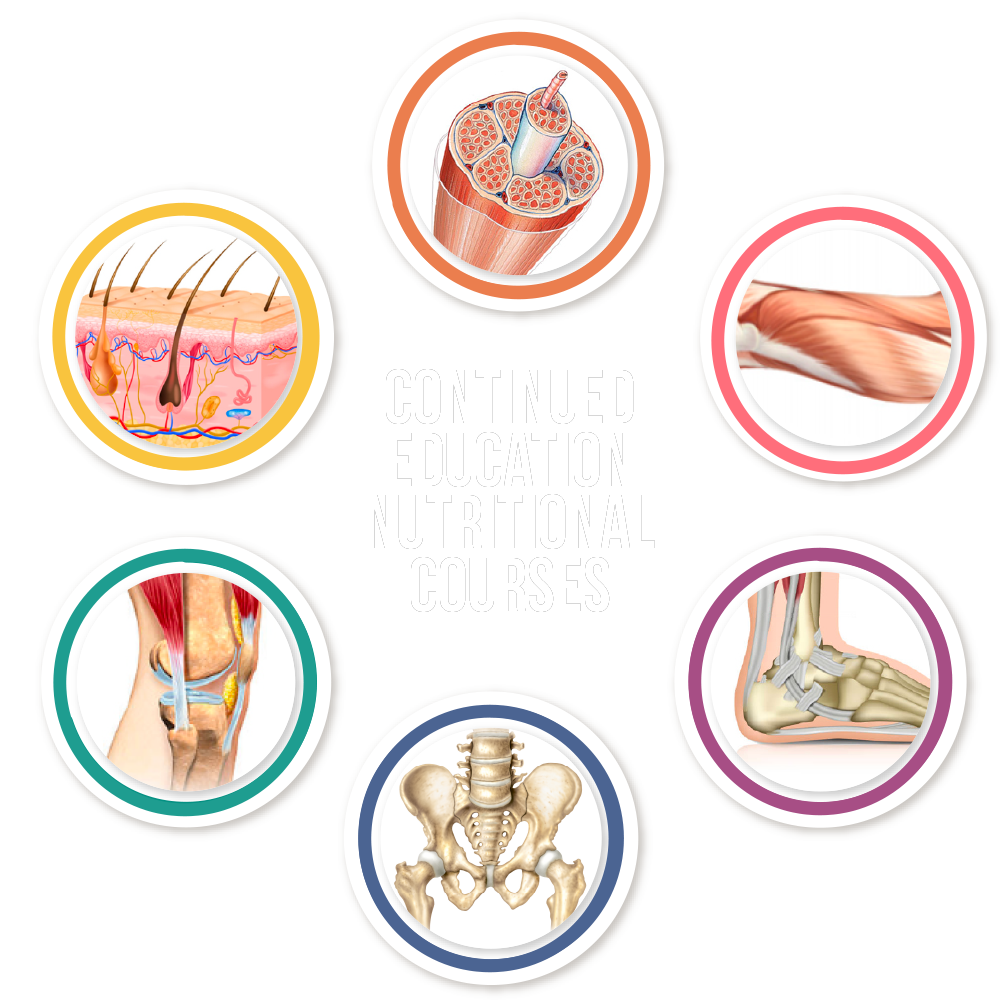
Conclusion
The bottom line is that any effective injury prevention program has to account for the key role of recovery. With that in mind, nutrition becomes all the more important for supporting your body’s needs.
First, the right essential nutrients in an anti-inflammatory low-sugar diet set a good foundation. Then, potent recovery-enhancing foods that promote blood flow and microcirculation set you up for success.
To enhance injury prevention, specific recovery exercises that foster tissue rehydration and resilience, combined with the right manual therapies, are key.
Take a look at these blogs to get a comprehensive idea:


Keep in mind that an under-recovered body becomes an injured body, so enhance your recovery to set yourself up for long-term success!
We want to hear from you!
Get practical details on how to eat and supplement to support your exercise recovery, heart health, beauty, and energy levels.
Subscribe and never miss out!
Resync is backed by research. That’s why we break down complex science into practical takeaways you can use today. When you have the right information, you are empowered to make the right decision for you.
If there’s something you want to know more about, let us know by leaving a comment, contacting us or getting in touch on Facebook & Instagram!
Helping you lead a healthier life,
-The Resync Team

JOIN OUR NEWSLETTER
Stay up to date with the latest science-backed data, receive expert knowledge, and healthy inspiration for you and your family.
Get 15% Off Your Order When You Sign Up For Our Newsletter
Save 20% Off All Resync Products
Use Code: BLOG2021
Shop NowWritten by:


Barbara Depta & Detrick Snyder, MPH, RD




